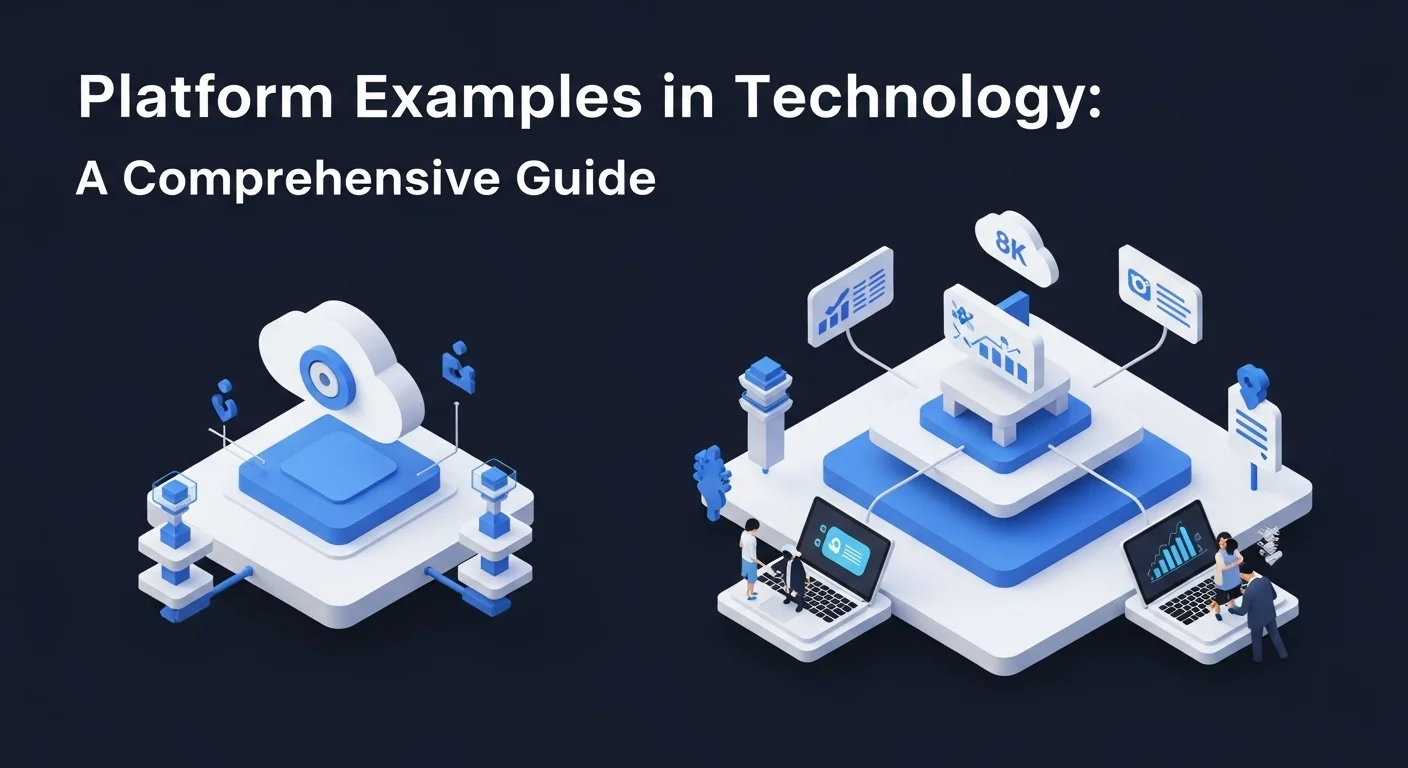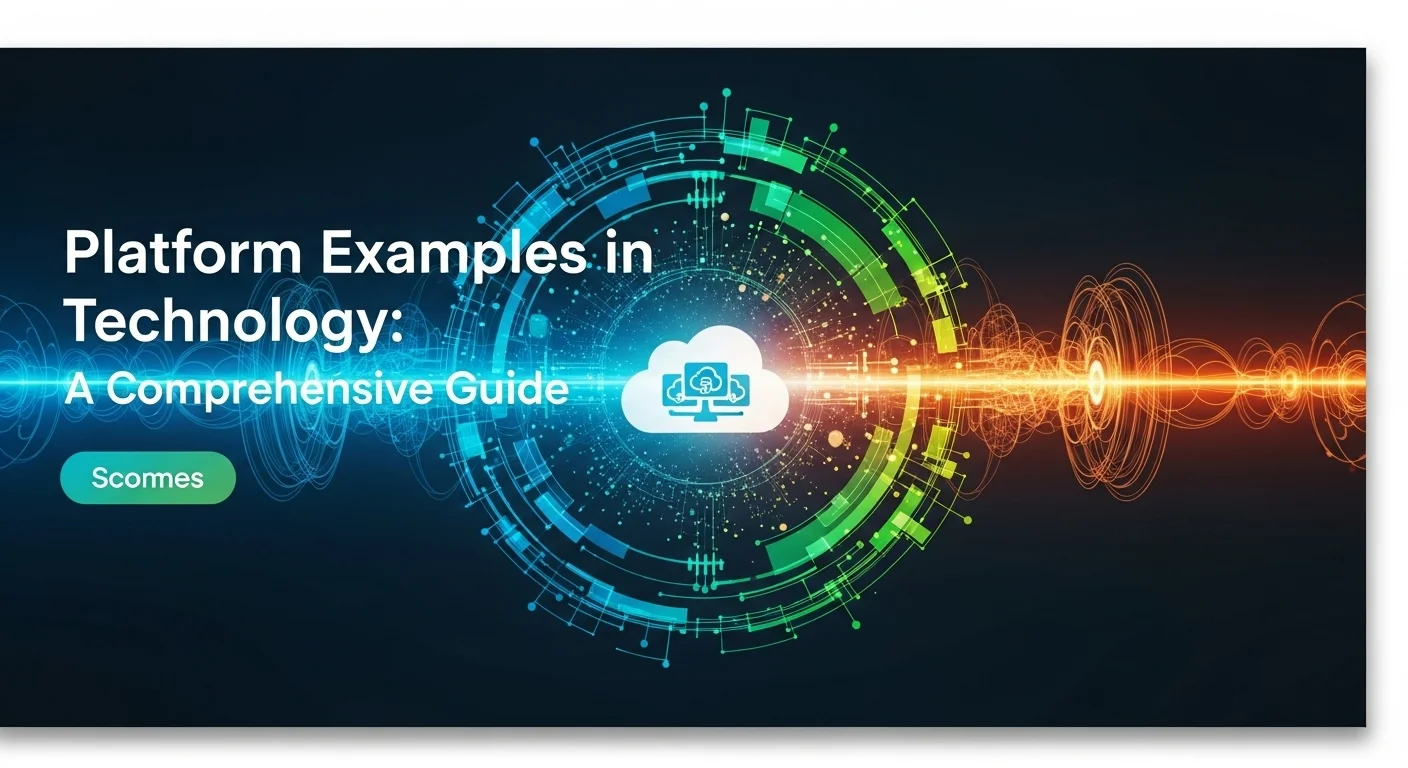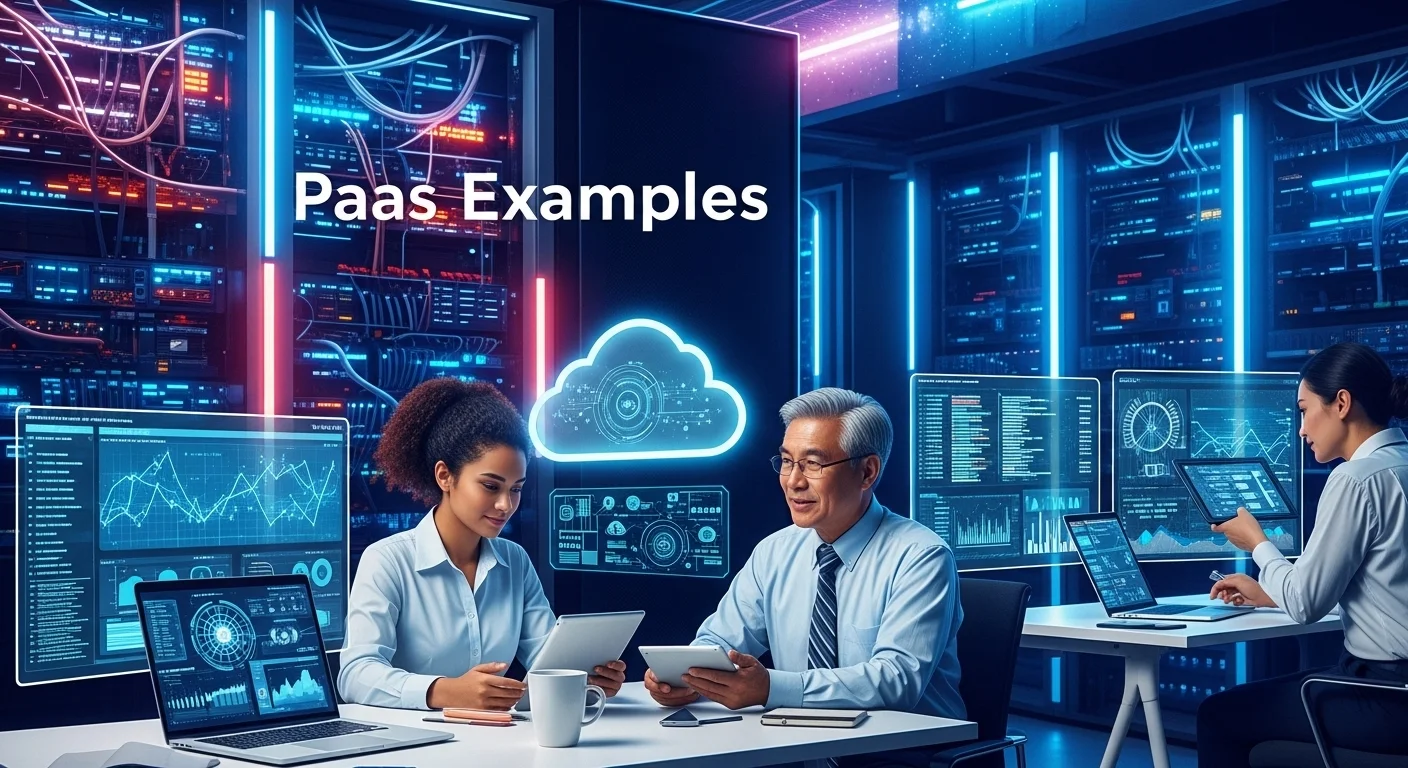Tech Platforms Explained: From AWS to Your App, A Real-World Guide

Executive Summary
I've spent over a decade helping businesses navigate the tech world, and one of the first hurdles is always the same: figuring out what a 'platform' really is. In today's world, everything runs on one. From the cloud services that power your favorite streaming app to the social networks that connect us all, platforms are the invisible architecture of our digital lives. I wrote this guide to demystify them. We'll walk through the essentials of cloud computing—IaaS, PaaS, and SaaS—using straightforward language and real-world examples from giants like Amazon Web Services (AWS), Microsoft Azure, and Google Cloud Platform (GCP). My goal is to show you, from my experience, how these tools work and how you can use them to build something amazing, make your business more efficient, or simply get a competitive edge. Whether you're a developer, a business owner, or just curious, this is the foundational knowledge you need.
Table of Contents
What Exactly is a Technology Platform?
In the digital economy, we hear the word 'platform' thrown around all the time. But what does it mean? Think of it this way: a technology platform is a stage on which a performance can happen. The stage itself doesn't write the play or perform the scenes, but it provides the essential foundation for everything else to work. An operating system like Windows or macOS is a perfect example; it’s the platform that allows thousands of different software applications to run. I've seen companies build incredible things because they started on the right foundation. A platform's real magic comes from creating connections—when more people use it, it becomes more valuable for everyone. That's the secret sauce behind some of the biggest companies in the world today.
You just can't overstate how important these platforms are. They're the engines of modern business, helping companies innovate faster and scale bigger than ever before. I remember when launching a new service meant buying racks of physical servers, hiring staff to maintain them, and spending a fortune before writing a single line of code. Cloud computing changed all that. It leveled the playing field, giving a startup in a garage access to the same powerful infrastructure as a global corporation. When businesses search for cloud computing platform examples, they're looking for the tools to build their dreams without the headache of managing hardware.
The Cloud Computing Revolution
If there's one platform that has defined this century, it's the cloud. Simply put, cloud computing is the delivery of all kinds of tech services—servers, storage, software, you name it—over the internet. Instead of owning your own computing infrastructure, you rent it from a provider. I've seen this shift transform businesses, offering incredible benefits: it saves money because you only pay for what you use, it scales instantly when you have a surge in traffic, and it lets your team work from anywhere. The giants in this space, like Amazon Web Services (AWS), Microsoft Azure, and Google Cloud Platform (GCP), provide the backbone for countless digital services we use every day.
To really get the cloud, you need to understand its three main flavors: Infrastructure as a Service (IaaS), Platform as a Service (PaaS), and Software as a Service (SaaS). Each one offers a different level of control and convenience. For instance, a developer who just wants to focus on code might lean towards PaaS, while a company needing total control over its environment would choose IaaS. Looking at cloud based platform examples in each category shows just how flexible this technology is. Take Netflix, for example. They moved their entire operation to the cloud. This allows them to stream movies to millions of people at once and handle huge viewership spikes during a new season premiere without a hitch. It's a powerful demonstration of how picking the right cloud platform examples can make a business incredibly agile and resilient.
Exploring Different Types of Platforms
While the cloud is a huge part of the story, it's not the whole thing. Technology platforms come in many shapes and sizes, each designed for a specific purpose. I've worked with companies leveraging all sorts of them:
- Social Media Platforms: Think Facebook, Instagram, and LinkedIn. They aren't just for sharing photos; they're massive platforms for advertising, marketing, and connecting with customers.
- E-commerce Platforms: Services like Amazon and Shopify have made it possible for anyone to open an online store and reach a global audience, handling everything from the website to payments.
- Payment Platforms: I've seen firsthand how Stripe and PayPal have revolutionized online business. They built platforms that make accepting payments simple and secure for everyone.
- Content Creation Platforms: YouTube and Spotify give creators the tools and the audience to share their work with the world.
- IoT (Internet of Things) Platforms: Platforms from AWS and Azure provide the backend to manage and analyze data from billions of smart devices, from your watch to industrial sensors.
Each of these platforms succeeds by connecting different groups of people. For a small business, Shopify can be a gateway to the world. For a large corporation, adopting a comprehensive cloud service like Microsoft Azure can streamline everything they do, from security to innovation. Choosing a platform is no longer just a tech decision; it's one of the most important business strategies a company can make.

A Deep Dive into Cloud Services: IaaS, PaaS, and SaaS
To really get a handle on tech platforms, you need to understand the main ways cloud services are delivered. It all comes down to three models: Infrastructure as a Service (IaaS), Platform as a Service (PaaS), and Software as a Service (SaaS). I love using the 'Pizza as a Service' analogy to explain this. It just clicks for people.
The Three Pillars of Cloud Computing: A Simple Analogy
- Infrastructure as a Service (IaaS): This is like having a pizza party where you make your own pizza. The cloud provider gives you the kitchen, oven, and electricity (the infrastructure), but you bring your own dough, sauce, and toppings (your data, applications, and operating system). You have the most control. The best cloud computing platforms examples here are Amazon EC2, Google Compute Engine, and Azure Virtual Machines. You rent the raw computing power.
- Platform as a Service (PaaS): This is like ordering a take-and-bake pizza. The pizza place provides the pizza with all the toppings (the platform, including the operating system and development tools), and you just have to bake it in your oven (deploy your application). You don't worry about making the dough, just cooking it. PaaS is a developer's best friend. Great cloud based platform examples include Heroku, AWS Elastic Beanstalk, and Google App Engine.
- Software as a Service (SaaS): This is the easiest one. It's like having a hot pizza delivered to your door. You don't do any work; you just enjoy the final product. The provider manages everything from the software to the servers. The most common examples of cloud computing platforms are the apps you use every day: Gmail, Salesforce, Slack, and Office 365.
The Titans of the Cloud: AWS, Azure, and GCP
The cloud market is dominated by three giants. I've worked with all of them, and each has its own personality and strengths.
- Amazon Web Services (AWS): AWS is the original pioneer and the market leader. They started it all back in 2006 and have an overwhelming number of services for literally anything you can imagine. Their strength is their maturity, massive scale, and a huge community. I often recommend AWS to startups and businesses that want the widest array of tools and a proven, reliable partner. Services like EC2 for computing and S3 for storage are the industry standard.
- Microsoft Azure: Azure's superpower is its deep integration with the enterprise world. If a company is already using Microsoft products like Office 365 and Windows Server, moving to Azure feels like a natural next step. I've found their hybrid cloud solutions—which connect a company's private data centers with the public cloud—are best-in-class. For businesses heavily invested in the Microsoft ecosystem, Azure is often the smartest choice.
- Google Cloud Platform (GCP): While newer to the game, GCP is a force to be reckoned with, especially in areas where Google has always shined: big data, machine learning, and containers (with Kubernetes). Google actually invented Kubernetes, so it's no surprise their container service (GKE) is considered top-tier. I always point clients with heavy data analytics needs or those looking to build cutting-edge AI products toward GCP. Their BigQuery tool is a beast for analyzing massive datasets.
Beyond the Hyperscalers: Other Notable Platform Examples
While the big three get all the attention, the platform world is full of other amazing players. Salesforce completely owns the customer relationship management (CRM) space as a SaaS platform. Oracle Cloud is a go-to for powerful database solutions. And for developers or small businesses who want simple, affordable cloud servers without all the complexity, I often suggest looking at DigitalOcean or Linode. They do one thing—provide simple virtual servers—and they do it really well. It just goes to show there's no single 'best' platform. The right choice always depends on your specific needs, budget, and goals.

Tips for Choosing the Right Platform for You
Choosing a technology platform is a big deal. It's like laying the foundation for a house—get it wrong, and everything you build on top will be shaky. Over the years, I've developed a checklist to guide companies through this process. It's not about picking the most popular name; it's about finding the right fit.
- Know Your Needs Inside and Out: Before you even look at a provider, you have to understand what you're building. Are you running a simple website or a complex AI model? GCP is fantastic for data, while Azure is great for Windows-based applications. Your specific workload is the most important factor.
- Understand the Real Cost: Cloud pricing can be tricky. Don't just compare the hourly cost of a server. I always tell my clients to look at the Total Cost of Ownership (TCO). This includes hidden costs like data transfer fees (a big one!), storage, and premium support. Use the providers' online calculators to estimate your monthly bill.
- Never Compromise on Security: This is non-negotiable. I always review a provider's security features, from data encryption to compliance certifications like HIPAA or GDPR. Remember, security is a shared job. The provider secures the cloud, but you are responsible for securing what you put *in* the cloud.
- Think About Your Ecosystem: A good platform has a strong community, lots of third-party tools, and plenty of skilled developers available. At the same time, you want to avoid 'vendor lock-in,' where it's incredibly difficult to move to another provider. Using open-source tools like Docker and Kubernetes can help keep you flexible.
- Check the Support and Guarantees: When something breaks at 3 a.m., how good is their support? For a small business without a big IT team, this is critical. Also, look at the Service Level Agreements (SLAs), which are their promises for uptime.
Best Practices for Implementation and Management
Once you've picked your platform, the real work begins. Here's my advice for getting it right:
- Automate Everything: Embrace a DevOps mindset. Use tools like Terraform or AWS CloudFormation to define your infrastructure as code. This makes your setups repeatable and saves you from human error. Trust me, your future self will thank you.
- Watch Your Wallet: Cloud costs can get out of control if you're not paying attention. Use cost management tools to monitor your spending in real-time and set up alerts for any surprise spikes.
- Layer Your Security: Don't rely on a single defense. Use strong identity policies, network firewalls, and encrypt your sensitive data. It's about creating multiple layers of protection.
- Design for Failure: I know it sounds pessimistic, but it's the key to resilience. Use the cloud's features to build applications that can survive an outage. Deploy across multiple data centers (Availability Zones) so if one goes down, your service stays up.
Future Trends: The Next Generation of Platform Technology
The tech world never stands still. Here’s what I'm most excited about right now:
- Serverless Computing: This still blows my mind. You can run your code without thinking about a single server. It's incredibly cost-effective and is changing how we build applications.
- AI and Machine Learning Platforms: AI is no longer science fiction; it's becoming a standard feature. Platforms like Amazon SageMaker and Google's AI Platform are making it possible for any business to use powerful AI.
- Edge Computing: With billions of IoT devices, it makes sense to process data closer to the source instead of sending it all to the cloud. Edge computing brings cloud power to the 'edge' of the network for faster, real-time results.
- Low-Code/No-Code Platforms: These platforms are empowering people without coding skills to build their own applications using simple drag-and-drop tools. It’s a huge step in making technology accessible to everyone.
By choosing wisely, managing smartly, and keeping an eye on the future, you can harness the incredible power of today's technology platforms. For a great place to start with hands-on learning, I always recommend the AWS Getting Started Resource Center. It has fantastic tutorials for all skill levels.
Expert Reviews & Testimonials
Sarah Johnson, Business Owner ⭐⭐⭐
As a small business owner, I found this helpful, but I'd love to see more case studies on how platforms like Shopify or Stripe can directly impact a non-tech business.
Mike Chen, IT Consultant ⭐⭐⭐⭐
A solid overview for anyone new to the cloud. The pizza analogy for IaaS/PaaS/SaaS is a classic for a reason! It clarifies the concepts well. Great read.
Emma Davis, Tech Expert ⭐⭐⭐⭐⭐
Finally, an article that puts it all together! As a developer, I appreciate the clear breakdown of AWS vs. Azure vs. GCP without getting lost in jargon. This is exactly the kind of overview I'd share with my team.



